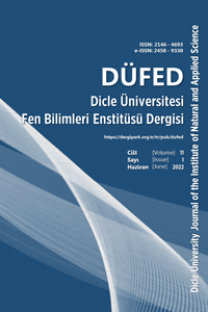Experimental Modeling of Dry Friction Coefficient between Steel and Aluminum Alloy in the Condition of Severe Plastic Deformation
Experimental Modeling of Dry Friction Coefficient between Steel and Aluminum Alloy in the Condition of Severe Plastic Deformation
Experimental modeling, Contact pressures, Friction coefficient Severe plastic deformation, Coulomb’s law,
___
- 1. Ulutan, M., et al., (2010). Effect of Different Surface Treatment Methods on the Friction and Wear Behavior of AISI 4140 Steel. 26(3), 251-257.
- 2. K.M. Adel, A.S. Dhia, and M.J. Ghazali, (2009). the effect of laser surface hardening on the wear and friction characteristics of acicular bainitic ductile iron. 4(2), 5.
- 3. Johnson, K. and R. Cameron, (1967). Fourth paper: shear behaviour of elastohydrodynamic oil films at high rolling contact pressures. 182(1), 307-330.
- 4. Patil, B., U. Chakkingal, and P. Kumar, (2008). influence of friction in equal channel angular pressing – a study with simulation. 5(13-15.
- 5. Eskandarzade, M., Masoumi, A., Faraji, Gh., Mohammadpour, M., Sabrina Yan, X, (2017). A new designed incremental high pressure torsion process for producing long nanostructured rod samples. 695, 1539- 1546.
- 6. Eskandarzade, M., Masoumi, A., Faraji,. Gh. (2017) Numrical and analytical investigation of an ultrasonic assisted ECAP process. 2(2), 166-183.
- 7. Mehdi Eskandarzade, A.M., Ghader Faraji, (2016). Numerical and analytical investigation of an ultrasonic assisted ECAP process. 2(2), 18.
- 8. Lai, X., et al., (2012). An experimental method for characterizing friction properties of sheet metal under high contact pressure. 289(0), 82-94.
- 9. Pougis, A., et al., (2013). Dry friction of steel under high pressure in quasi-static conditions. 67(0), 27-35.
- 10. Spijker, P., G. Anciaux, and J.-F. Molinari, (2011). Dry sliding contact between rough surfaces at the atomistic scale. 44(2), 279-285.
- 11. Greenwood, J. and J. Tripp, (1970). The contact of two nominally flat rough surfaces. 185(1), 625-633.
- 12. Greenwood, J.A. and J.H. Tripp, (1967). The elastic contact of rough spheres. 34(1), 153-159.
- 13. Dwyer-Joyce, R., B. Drinkwater, and A. Quinn, (2001). The use of ultrasound in the investigation of rough surface interfaces. 123(1), 8-16.
- 14. Cohen, D., Y. Kligerman, and I. Etsion, (2008). A model for contact and static friction of nominally flat rough surfaces under full stick contact condition. 130(3), 031401.
- 15. Eguchi, M., T. Shibamiya, and T. Yamamoto, (2009). Measurement of real contact area and analysis of stick/slip region. 42(11), 1781-1791.
- 16. Buchner, B., M. Buchner, and B. Buchmayr, (2009). Determination of the real contact area for numerical simulation. 42(6), 897-901.
- 17. Li, L., I. Etsion, and F. Talke, (2010). Contact area and static friction of rough surfaces with high plasticity index. 132(3), 031401.
- 18. Pal, A.K., (1973). A study of metallic friction phenomena with high normal pressure. 26(2), 261-272.
- 19. Kim, H. and N. Kardes, (2012). Friction and lubrication.
- ISSN: 2146-4693
- Yayın Aralığı: Yılda 2 Sayı
- Başlangıç: 2012
- Yayıncı: Dicle Üniversitesi
Emel DIRAZ, Şengül KARAMAN, Hasan DURDU, Ashabil AYGAN, Sedat KÖSTEKCİ
Halep Damascus, Şam Keçisi Yetiştiriciliği
Betonda Çimento ve Aggrega Yerıne Kullanılan Atık ve İkincil Maddeler
Hakan CENGİZLER, Nıka JAHANGIRI, Kemal KÖSEOĞLU
Amir Sharifi MİAVAGHİ, Haleh KANGARLOU
Sürekli Mıknatıslı Senkron Motorlarda Meydana Gelen Arızaların İncelenmesi
NiTiCu Şekil hatırlamalı Alaşımın Oksidasyon ile yüzey Özelliklerinin Geliştirilmesi
